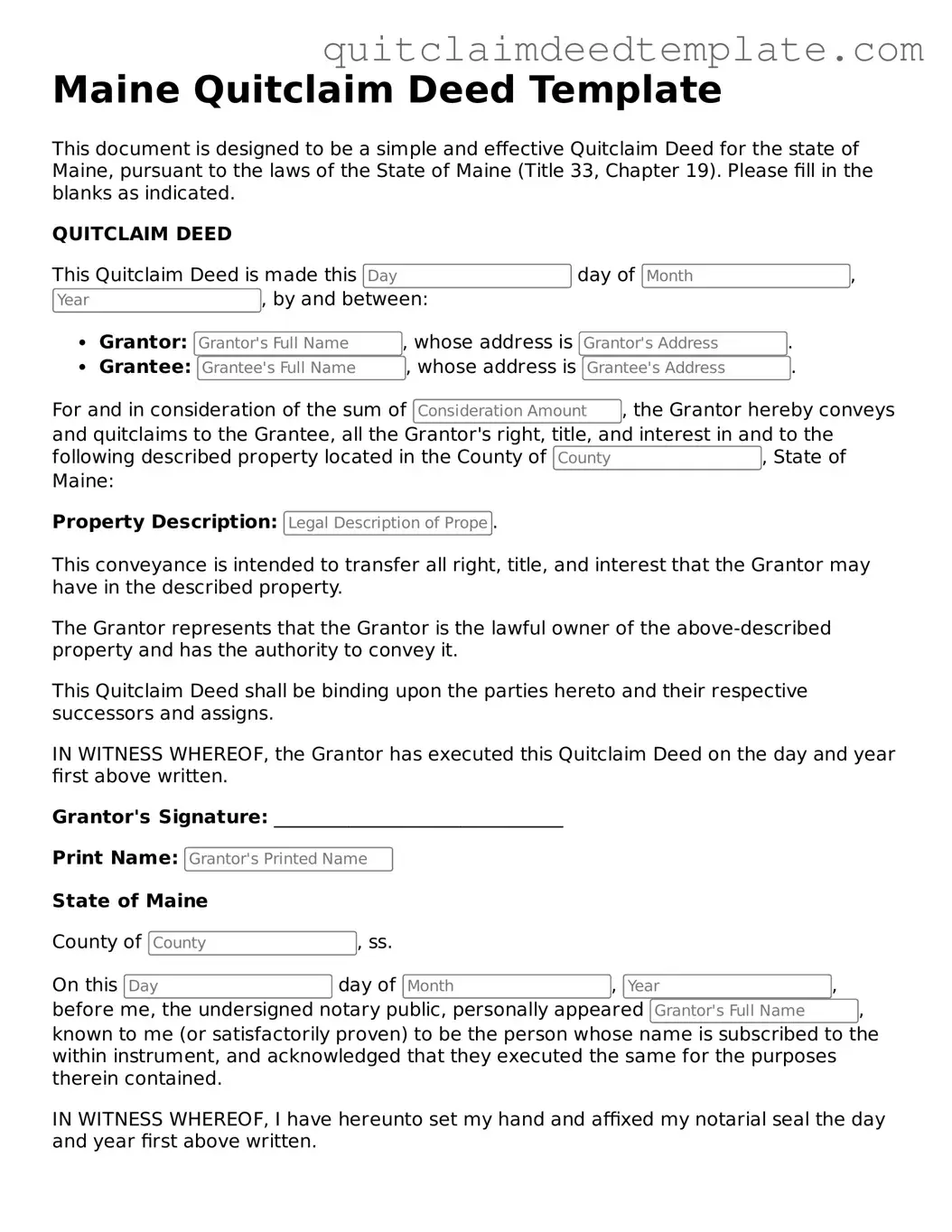Documents used along the form
When completing a property transfer in Maine using a Quitclaim Deed, it is essential to consider additional documents that may be required to ensure a smooth and legally sound transaction. Below are four commonly used forms that complement the Quitclaim Deed.
- Property Transfer Tax Declaration: This form is used to report the transfer of property and calculate any applicable transfer taxes. It provides necessary information about the transaction to the state and local authorities.
- Affidavit of Title: This document serves as a sworn statement by the seller affirming their ownership of the property and confirming that there are no undisclosed liens or encumbrances. It provides assurance to the buyer regarding the title's validity.
- Notice of Sale: This notice is often required to inform interested parties about the sale of the property. It may need to be filed with the local municipality to comply with local regulations.
- Title Insurance Policy: While not a mandatory document, obtaining a title insurance policy is advisable. This policy protects the buyer against any future claims or disputes regarding the property’s title.
Being aware of these additional documents can help facilitate a smoother property transfer process. It is advisable to consult with a legal professional to ensure all necessary forms are completed accurately and submitted on time.
